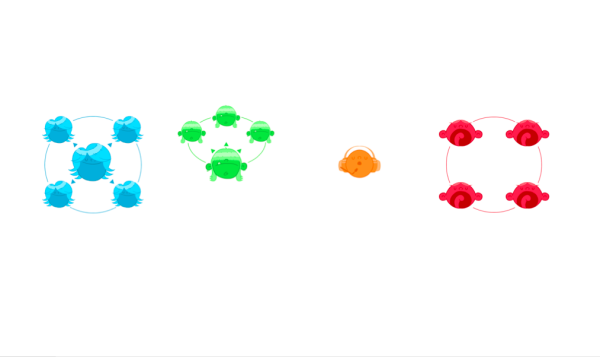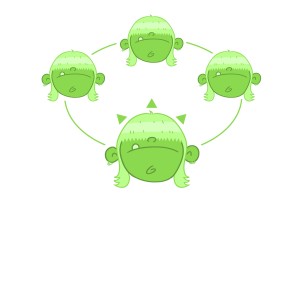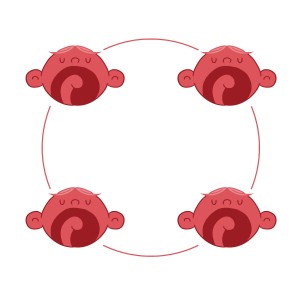
Leaders of Learning

By Luna Oliveira
Art by Shelby Hohl
Learning is an individual process, yet the current educational system uses an antiquated, one-size-fits all model. In this model, the teacher is the main source of knowledge and the tests measure “success.” No Child Left Behind, the regime implementing standards-based education, has made standardized tests the sole metric for measuring success in school. This has caused educational experts to look at alternatives to the regular school system. Charter schools, Montessori schools, homeschooling, and online courses all sound like great alternatives, but to truly maximize any student’s learning potential, it is useful to consider the different methods and models by which people learn.
Professor Richard Elmore of Harvard University has developed a framework for understand learning which breaks up learning styles into quadrants. The points of view are placed at the end of two axes: the horizontal axis moves from hierarchical to distributive, and the vertical axis moves from individual to collective. The hierarchical characteristic for knowledge sees learning as having a particular sequence with knowledge being well defined. The distributive definition means knowledge has multiple uses and the value of knowledge is defined by the opportunities a person has to acquire it. Individual then is self-explanatory—learning is a one-person activity. Collective learning, on the other hand, is when learning becomes a social activity and people organize themselves around subjects that are of common-interest to the group.
HIERARCHICAL INDIVIDUAL
In the hierarchical individual quadrant, learning organizes itself much like a boy band: the off-stage record company producer is real the leader of the band, and the on-stage band members simply follow him/her. Similarly, in classrooms organized this way, the teacher becomes the main source of knowledge and students are then assessed through the use of standardized tests. This quadrant is the most dominant in the current educational sector in the United States.
The hierarchical collective sector is like a rock band. The main songwriter is the leader of the band, but the songs are not complete without input from each band member. Applying this analogy to a school setting, the success of a student is measured by how productively and collaboratively they participate in a community. Standardized assessments are not possible in this case. Rather, schools might use the Socratic Seminar, which works best when students are offered an authentic text ahead of time and are asked, during class, open-ended questions about the subject. The teacher here acts as a facilitator and guides students toward self-reflection to arrive at the answer.
DISTRIBUTIVE INDIVIDUAL
In the distributive individual quadrant, learning works like a solo artist would: instruments are provided where s/he can play the music that best fits her/his own wants and needs. This model promotes the idea that every human is motivated to learn what s/he finds necessary based on her/his interests, values and aptitude. Learning, therefore, is voluntary and also based on the availability of resources of the student. Success is determined by the individual and their own goals. For example, North Star is a private institution that supports students through self-directed learning. At this institution, students are allowed to explore and master their interests and are not tied to a curriculum like they would be at a regular high school.
DISTRIBUTED COLLECTIVE
The last quadrant is the distributed collective. This quadrant is best represented by a jazz band or a jam band, where all instruments share their own “ideas” and feed off of each other, making music complete only when all are involved. Success is determined when the learner can contribute ideas efficiently and meaningfully, while at the same time learning from various communities. An example of this quadrant is “edcamp,” a conference organized by educators, for educators. At the beginning of each conference, each participant creates sessions based on what s/he would like to teach or learn.
The four modes of learning is a concept that affects other sectors of an institution including leadership, organization and design. All of these aspects of an organization are intrinsically related to the modes of learning because they influence students’ success. It is most critical that leaders in the educational sector become aware of the different aspects of learning and how they can better tailor education for different learning styles in the future.






You must be logged in to post a comment Login